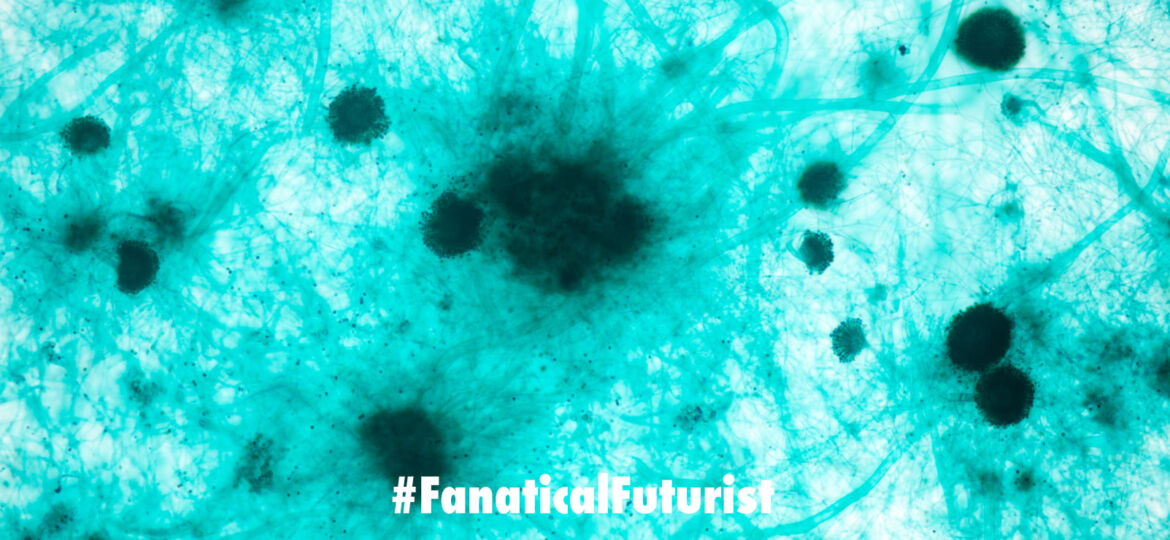
WHY THIS MATTERS IN BRIEF
When things go wrong in the global supply chain it can be hard to find and fix the fault and recall the products, this improves the situation.
 Love the Exponential Future? Join our XPotential Community, future proof yourself with courses from XPotential University, connect, watch a keynote, or browse my blog.
Love the Exponential Future? Join our XPotential Community, future proof yourself with courses from XPotential University, connect, watch a keynote, or browse my blog.
Today’s supply chains are global and complex, and when something goes wrong, especially for example with food, it’s often difficult and sometimes impossible to figure out their origin and “story,” which can include everything from the conditions under which they were transported all the way through to the way they were produced. So, it’s not surprising that today companies around the world are trying to find new and easy ways to help supply chains become more transparent – whether it’s by using blockchain technology to track pigs and tuna, using quantum computers to optimise manufacturing supply chains, or even developing edible electronics that can track everything an individual food item has experienced. And now, there’s another innovation to add to the crop. Literally.
Spraying crops with bacterial or yeast spores that have unique DNA “barcodes” would make food safer by allowing the source of food poisoning to be rapidly identified, says a team at Harvard University. The group has genetically engineered the organisms, developed a rapid test for them, and shown that the spores – which are inert and harmless – persist and remain detectable, even on cooked food. Which would make them an ideal tool.
It is estimated that almost 1 in 10 people worldwide get food poisoning and more than 400,000 die of it every year, according to the World Health Organization. Tracing the source of contamination is difficult and can take many weeks, says Jason Qian at Harvard University.
His team has genetically engineered strains of Bacillus subtilis bacteria and Saccharomyces cerevisiae yeast to give them unique DNA “barcode” sequences. These species are very common and also form tough, long-lasting spores.
The spores of the barcoded microbes are inert. The genes required for B. subtilis to come out of dormancy have been deleted, and the yeast spores are heat-treated to kill them. Both types are also unable to make a key amino acid, so can only grow when fed it.
The team then sprayed the spores on various surfaces including sand, soil, carpet and wood. They were detectable three months later even on surfaces that were swept or vacuumed, or subjected to simulated wind or rain.
Next, the spores were sprayed on plants growing in pots. A week later, the team was able to identify which pot a leaf came from. The spores remained detectable even after washing, boiling, frying and microwaving. So if unique spores were sprayed on crops at different farms before harvesting, authorities could rapidly find out where any specific produce came from.
Food poisoning outbreaks can be very costly for food producers and shops, says Qian, because a lot of food often has to be taken off shelves as a precaution until the precise source of an outbreak is pinpointed.
Many farmers, including organic farmers, already spray their crops with Bacillus thuringiensis (Bt) spores to kill pests, he says. In fact, the team detected Bt spores on 10 out of 24 shop-bought food items. Barcoded spores could easily be added to Bt sprays, says Qian. “We don’t see any extra cost.”
Genetically modified strains of Bt have already been approved for use by farmers, says team member Michael Springer, also at Harvard University. For this reason, the team doesn’t think it would be difficult to get regulatory approval in the US for barcoded spores.
Whether the public would approve is another matter.
“Most people don’t even realise that Bt has been used since the 1960s,” says Springer. The team is working with a company interested in commercialising the technology.
Journal reference: Science, DOI: 10.1126/science.aba5584
















